Guest Blog by Siddharth Agarwal
In the years 2018 and 2019, I spent months walking East across India with Paul Salopek on the Out of Eden Walk (For details, see: https://www.nationalgeographic.org/projects/out-of-eden-walk/#section-0). His trail started in the Great Rift Valley of Ethiopia in East Africa, roughly following the path of the early human migration out of Africa and across the globe.
The India trail of the Out of Eden Walk started from the India-Pakistan border at Wagah, Punjab. It then moved East through the Indus Basin, followed by the basins of West flowing rivers like Luni, then a large chunk through the southern Gangetic plains in Central India before crossing over to the Brahmaputra basin close to Siliguri in West Bengal. The crossover to Myanmar happened at Moreh in Manipur, also incidentally very close to the basin boundary of Brahmaputra and Irrawady. He entered India in March 2018, and crossed over to Myanmar in July 2019.
The Out of Eden Walk trail in India was ~4000kms, of which I was present for about 1500kms in different sections. These stretches were spread across Rajasthan, Madhya Pradesh, Uttar Pradesh, Bihar, West Bengal, and bit of Assam & Manipur.
A series of 3 photo blogs of which this is the third part, try and provide a glimpse of the rivers we crossed while on this walk. This story is from the stretch between Kishanganj, Bihar and Gossaigaon, Assam, a distance of about 400 kms that we walked in about 18 days.
See the first part here: https://sandrp.in/2020/07/15/river-stories-walking-across-india-i/
See the second part here: https://sandrp.in/2020/09/10/river-stories-walking-across-india-ii/
At walking pace, information is no longer limited to a scroll on the phone screen, and much more becomes visible. This pace also allows for observations that would definitely be missed if travelling at speed in a motor vehicle.
The blinding speed of modern day reality hides a lot. India and its relation with the environment – rivers, in context of this article – see a similar game play out. Large scale interventions are the mood of the day. A billion dollar package for the “Holy Ganga” is all that matters, while in reality, the river bleeds dry from a thousand cuts made all over its catchment and more – dams, floodplain encroachments, mines – are proposed to great public fanfare.

These cuts will make sense to us only if we understand the idea of interconnectedness. A river is not only a single stream of water that flows, but an ecosystem that is the sum of all that happens in its catchment. That the river is a report card of the health of the catchment is an oft repeated concept.
In these pieces from the walk, I intend to share views of smaller, not so popular rivers that I was able to slow down and see while on the above mentioned walk in different geographies of India. The first part dealt with the stretch from near Gwalior to the banks of the Ganga East of Allahabad. This second part looks at rivers and rivulets, perennial and seasonal, between Bodh Gaya and Purnea. Of course we will see the popular rivers too. Let’s start with a map of the walk, also showing the popular rivers as well as the overall drainage network.
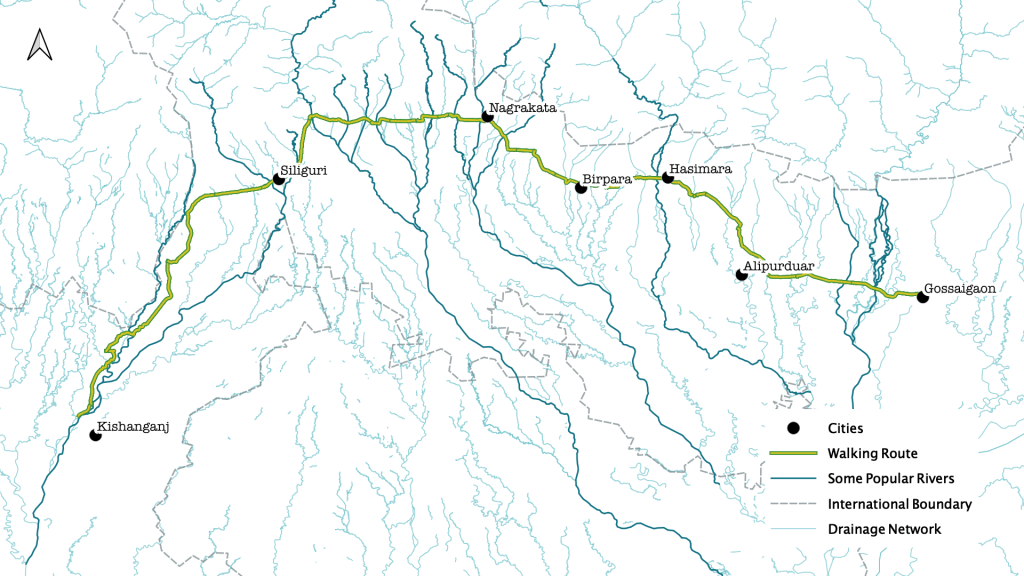
A small video clip from this section of the walk, of the rivers we crossed and saw, and the life around it:
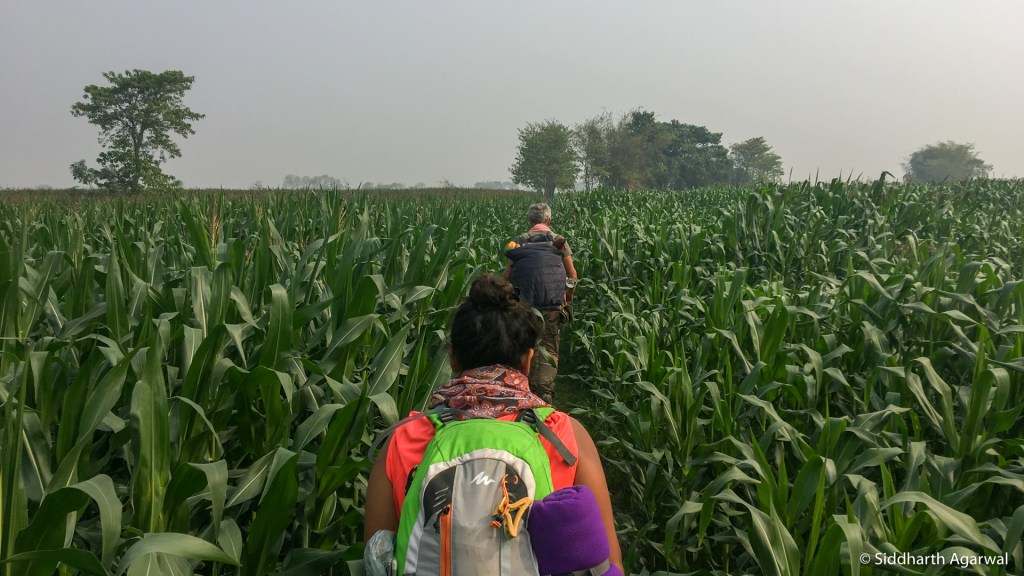
Walking through fields of Maize close to the Mahananda River. North of Kishanganj, Bihar. Date: 23/02/2019

Smaller streams have now been occupied and converted into paddy farms. North of Kishanganj, Bihar. Date: 23/02/2019
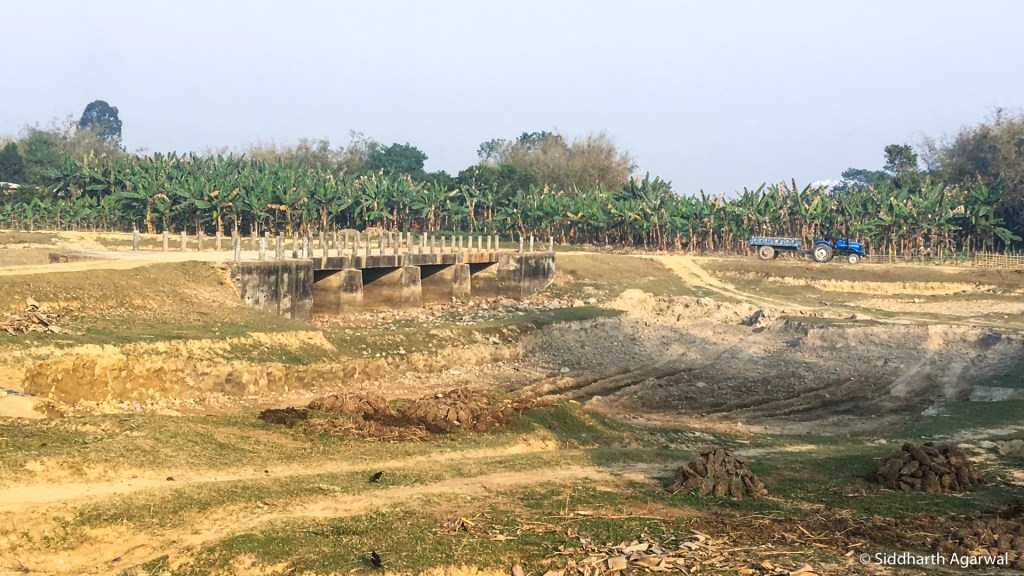
Many of the seasonal streams have been completely stripped for sand and other river bed materials. The theme of sand mining continued through this stretch of the walk. Near the India-Nepal border, Bihar. Date: 24/02/2019

A panoramic view of the Mechi River from a bridge, as it flows South after having formed the India – Nepal border for many kilometers. Bridge at Sukhani, Bihar. Date: 24/02/2019
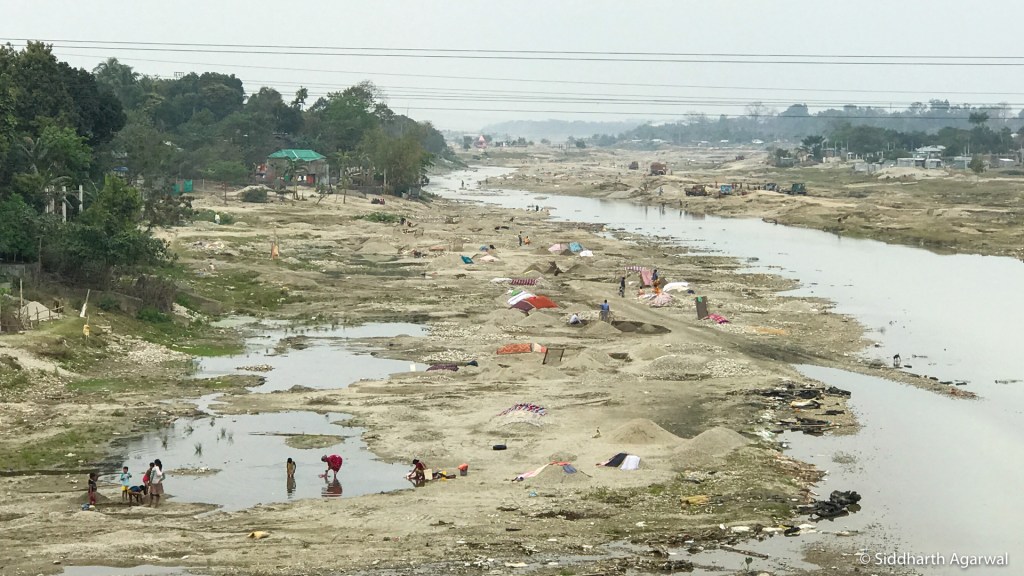
River Balasan at Siliguri. The riverbed profiles as moved further East from Siliguri clearly constituted more gravels and stones – a result of being in the transition zone between the Himalayan mountain range in the North & the alluvial plains further South. Date: 03/03/2019
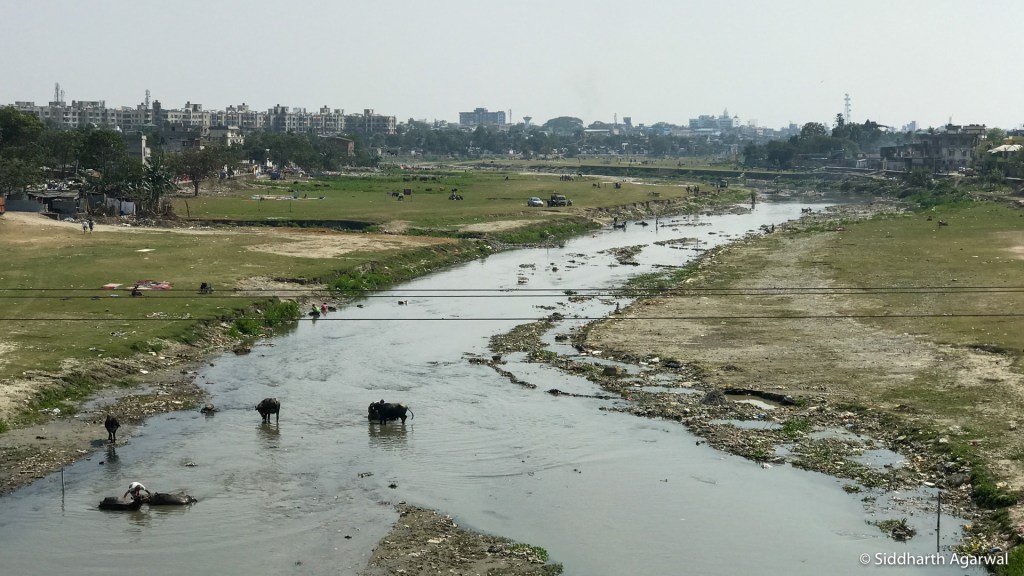
River Mahananda as it flows into Siliguri town. Here, one can see local communities making use of the river for various purposes – from bathing to cattle washing to washing clothes and even small scale stone mining. Date: 03/03/2019

River Teesta from the rail bridge at Sevoke. Starting from here, we continued witnessing large scale river bed mining for stones as we moved further EastDate: 04/03/2019
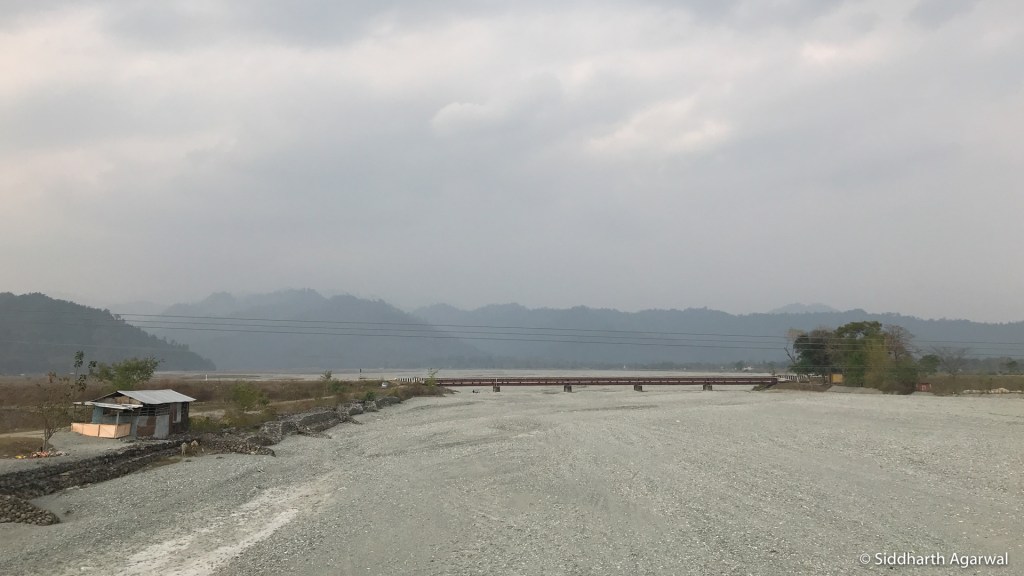
River Leesh, a non-perennial tributary of the Teesta. Date: 04/03/2019
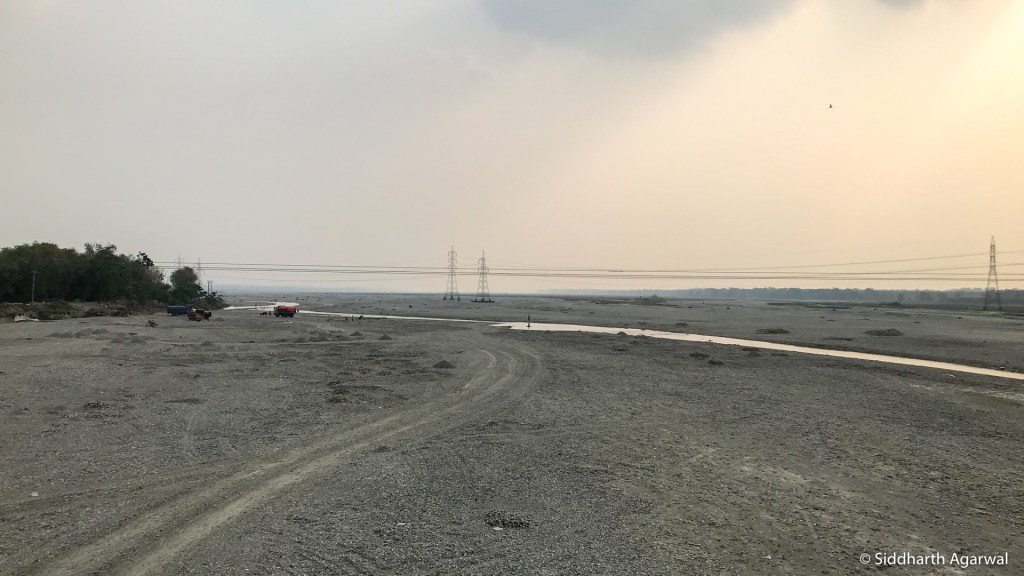
River Geesh, a non-perennial tributary of the Teesta. Date: 04/03/2019
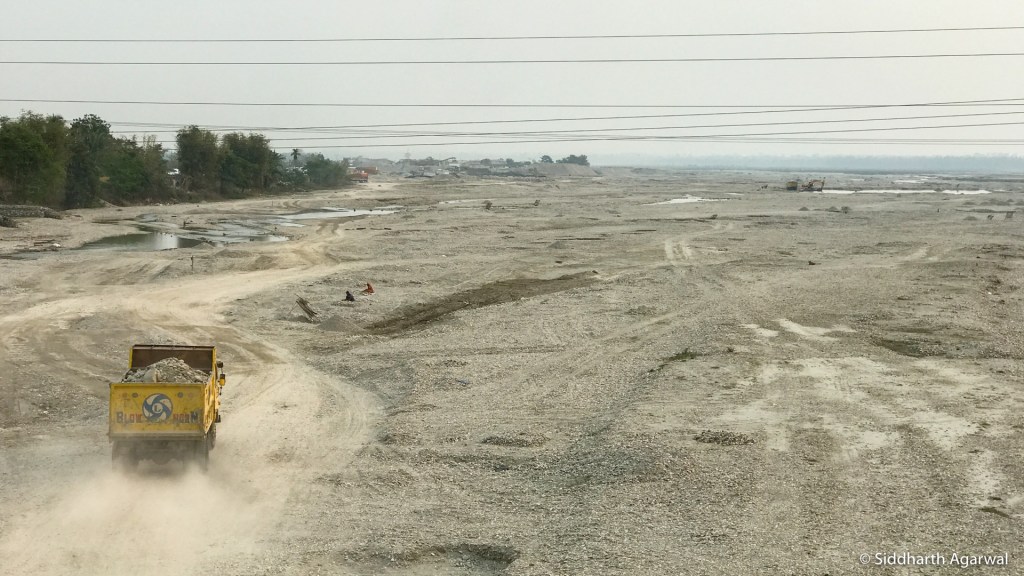
River Chel, a non-perennial tributary of the Teesta. Date: 04/03/2019
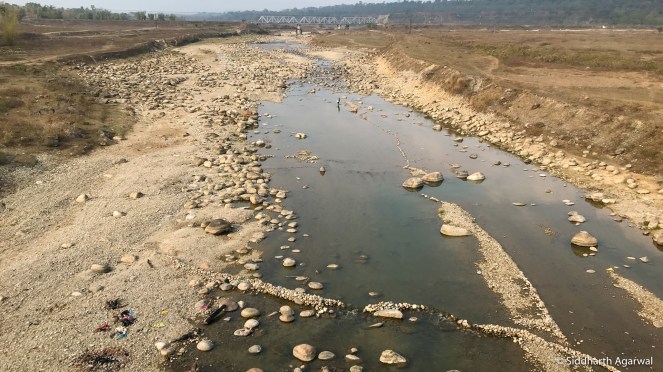
River Neora, after having drained the incredible Neora Valley National Park. Look closely to see fish traps made in the river using stones. This trap design transcends the ages, and similar patterns have been seen across the world. Date: 05/03/2019
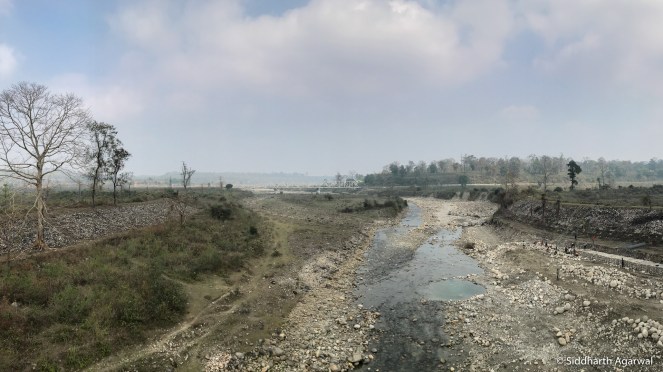
River Murti, flows gently, forming the Western edge of the Chapramari Wildlife Forest. Date: 06/03/2019

Remnants of an old dismantled bridge over River Jaldakha, as it flows towards Bangladesh. Date: 06/03/2019
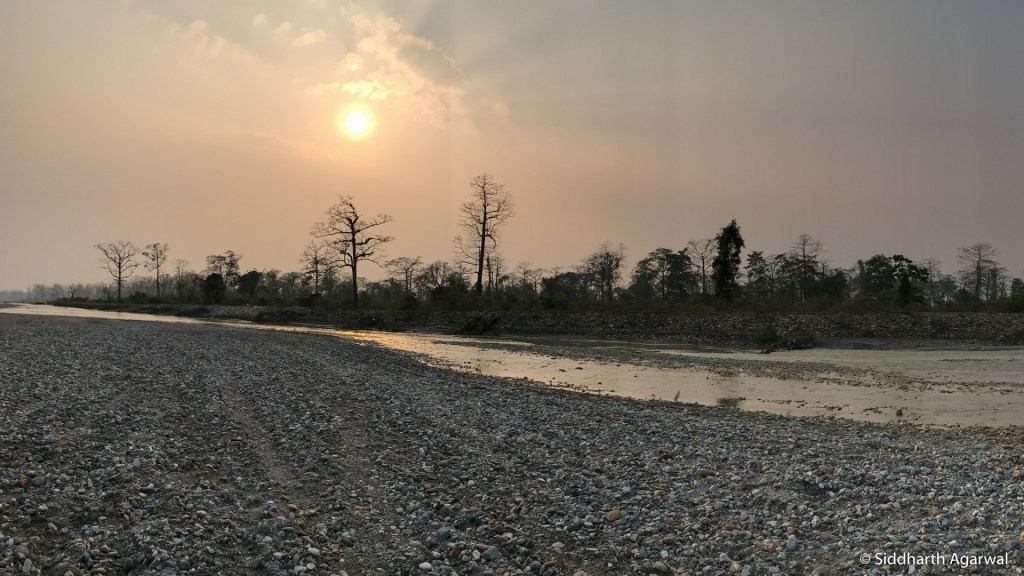
Sunset, as took a breather after crossing an active channel of the Diana River. Locals informed us of the presence of wild animals in the region, and we also recorded scat that appeared to be of Elephants & Rhinos. Date: 06/03/2019
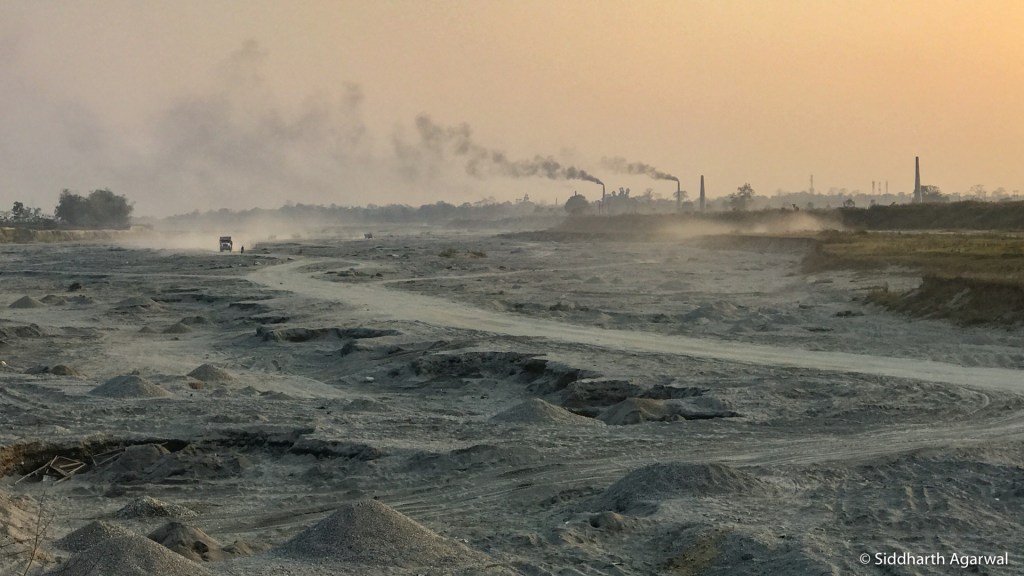
A dystopian scene on one of the many trans-boundary streams that flow into India from Bhutan, and then flow further into Bangladesh. Except that now instead of the river, large quantities of crushed lime stone and river bed stones are transported. Brick kilns were also seen lining the banks of many streams. Date: 07/03/2019

River Torsa as it gently flows South into Bangladesh. Date 08/03/2019
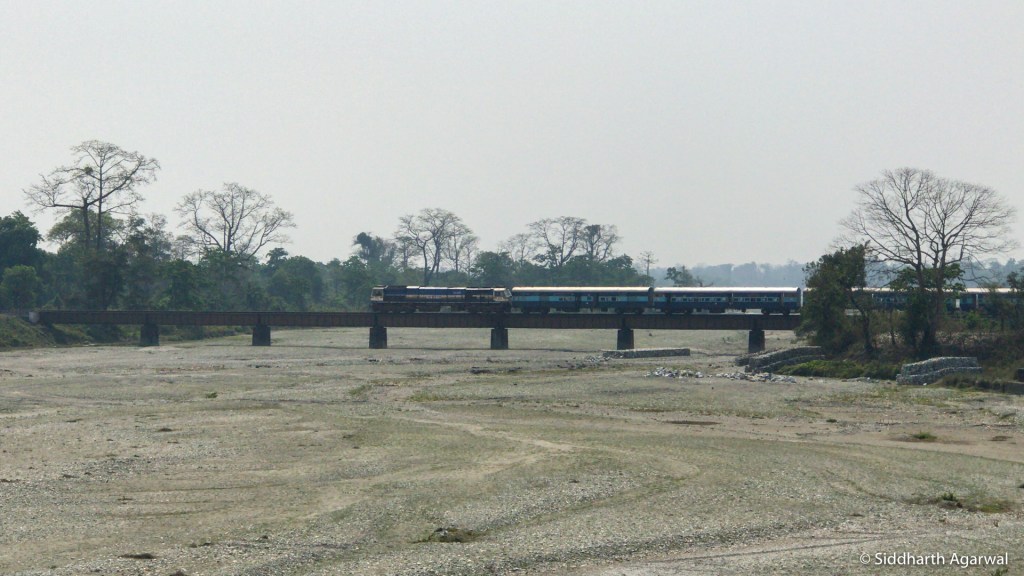
A train makes its way across a bridge over River Dima. The rail lines in this region are unfortunately a big stress for the elephants, whose corridors are severely affected due to the laying of these lines. Date: 10/03/2019
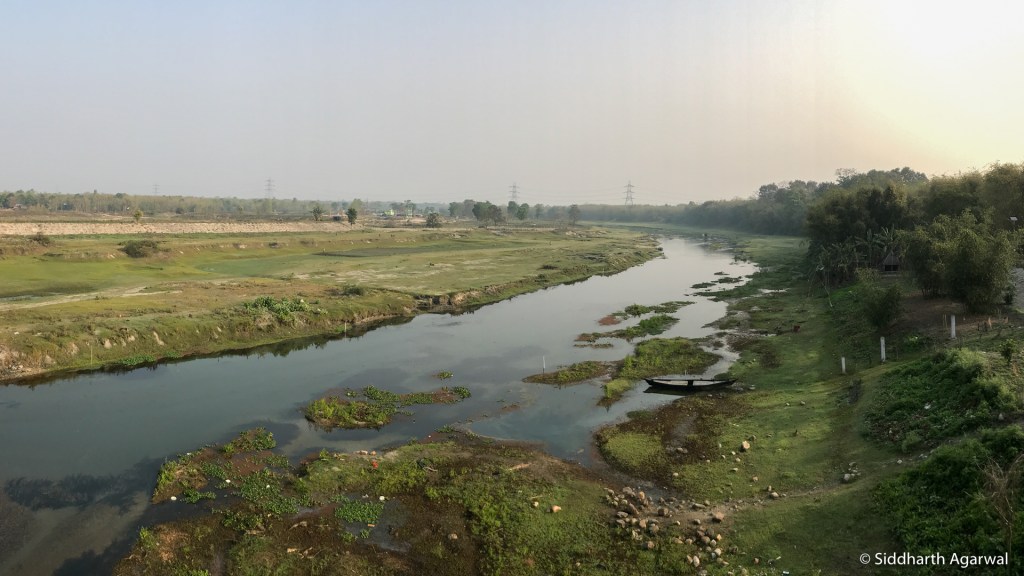
Gentle morning views of Raidak-I river. Date: 12/03/2019

Incessant sand and gravel mining on Raidak-II river. The boats were being loaded by local men who were diving and gathering sand from the river bed. In the distance, heavy machinery was deployed for gravel mining from the river bed. Date: 12/03/2019
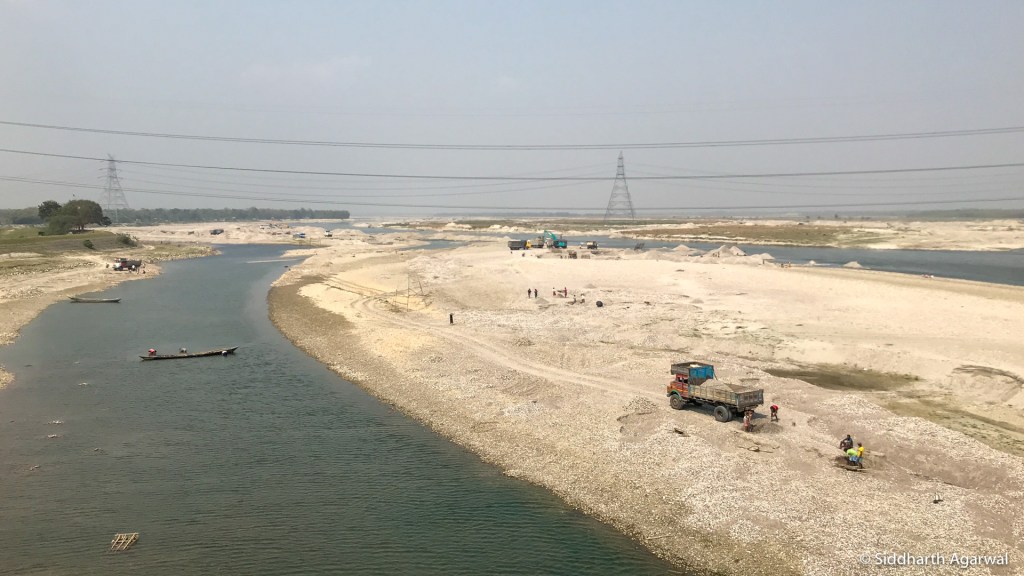
Mining continues on the Sankosh river, which also forms the present day boundary between the states of West Bengal and Assam. Date: 12/03/2019
Walking across India with Paul brought fresh ideas to my thoughts that had formed from my earlier walks along rivers. We were walking from one watershed to another, our walk a gentle fall and rise, intersected by the river. Or one could say, a gentle rise and fall, intersected by the watershed boundary.
I’m definitely convinced that what we choose to do with our environment is dependent on how we relate to them, and walking has enabled me to feel a deeper relation to the environment – looking at it as more than just a resource. Of course it is easy for me to say this with my privilege of an urban life, but it is now a deep seated idea in my head nonetheless.
Thank you for reading through the 3 parts and following this journey. If you’ve made it this far, I request you to go back and look through the photos again. Observe how the colour of the land, the river and the sky change. To be able to see that change, on foot, at the pace of walking, is an incredible feeling. Hopefully you will take a walk too, along a river, or otherwise, and observe such changes.
Siddharth Agarwal has been walking across India along rivers, trying to document and bring stories of marginalised people and the environment into the mainstream. He can be reached at asid@veditum.org or on twitter at @sidagarwal
